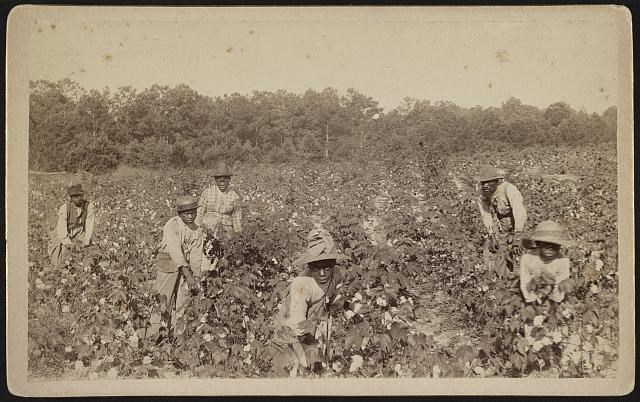|
As historian Seth Rockman states, “Cotton did not grow along the banks of the Blackstone,” but cotton was still important to the Blackstone River Valley. Little cotton was grown in the United States in 1787. As the nation expanded into the fertile region of the Deep South, cotton plantations became more common. There was a huge increase in cotton production in the United States after the War of 1812. This happened along with a textile boom in the Northeastern U.S. By 1850, 1.8 million of the nation’s 3.2 million enslaved people were growing and picking cotton. By 1860, enslaved labor produced over 2 billion pounds of cotton each year. 
Courtesy of the Library of Congress About 75 percent of the cotton grown in the American South was sold internationally. The British Empire was by far the largest consumer of Southern cotton. Northern industrialists purchased the remaining 25 percent for their textile mills. Textile workers in the north also participated in the cotton economy by producing “negro cloth” or “slave cloth.” This coarse cloth was cheap to make and uncomfortable to wear. Textile manufacturers profited from selling this cheap clothing to plantation owners, who forced enslaved people to wear it as a symbol of their servitude. Rhode Island textile mills made most of this cloth. Some mill owners even bought over-priced cotton in order to secure contracts for selling “slave cloth” to plantations. People, Places and Stories
|
Last updated: May 25, 2025



